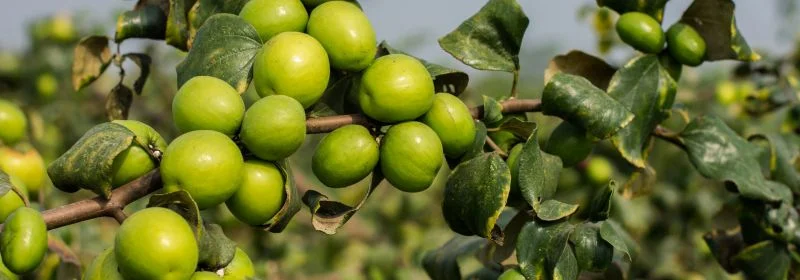Welcome to the vibrant world of Indian jujube fruit, a delightful treasure hailing from the bountiful lands of Asia.
Ziziphus mauritiana, commonly known as Indian jujube, is a tropical gem revered for its myriad names – Indian plum, Chinese date, Chinese apple, ber, and dunks.
Belonging to the esteemed family Rhamnaceae, this fruit tree species boasts a rich cultural heritage intertwined with culinary delights and medicinal prowess.
The Indian jujube, with its petite size and distinctive round shape, presents a compelling mixture of sweet and tangy flavors, making it a beloved treat among fruit enthusiasts worldwide.
Its vibrant hues of red and golden yellow lure in admirers, while its succulent flesh offers a burst of juicy goodness with every bite.
Whether savored fresh off the tree or incorporated into delectable desserts and savory dishes, the Indian jujube captivates palates with its unique taste and versatility.
Beyond its culinary appeal, the Indian jujube holds a special place in traditional medicine and is esteemed for its potential health benefits.
Rich in essential vitamins, minerals, and antioxidants, this fruit boosts immunity, aids digestion, and promotes overall well-being.
From ancient times to modern-day, the Indian jujube remains a cherished symbol of nourishment, vitality, and cultural heritage, captivating hearts and taste buds alike with its enchanting essence.
Join us on a journey to discover the splendor of the Indian jujube a true testament to nature’s abundance and the wonders it bestows upon us.
1. Indian Jujube Cultivation Techniques
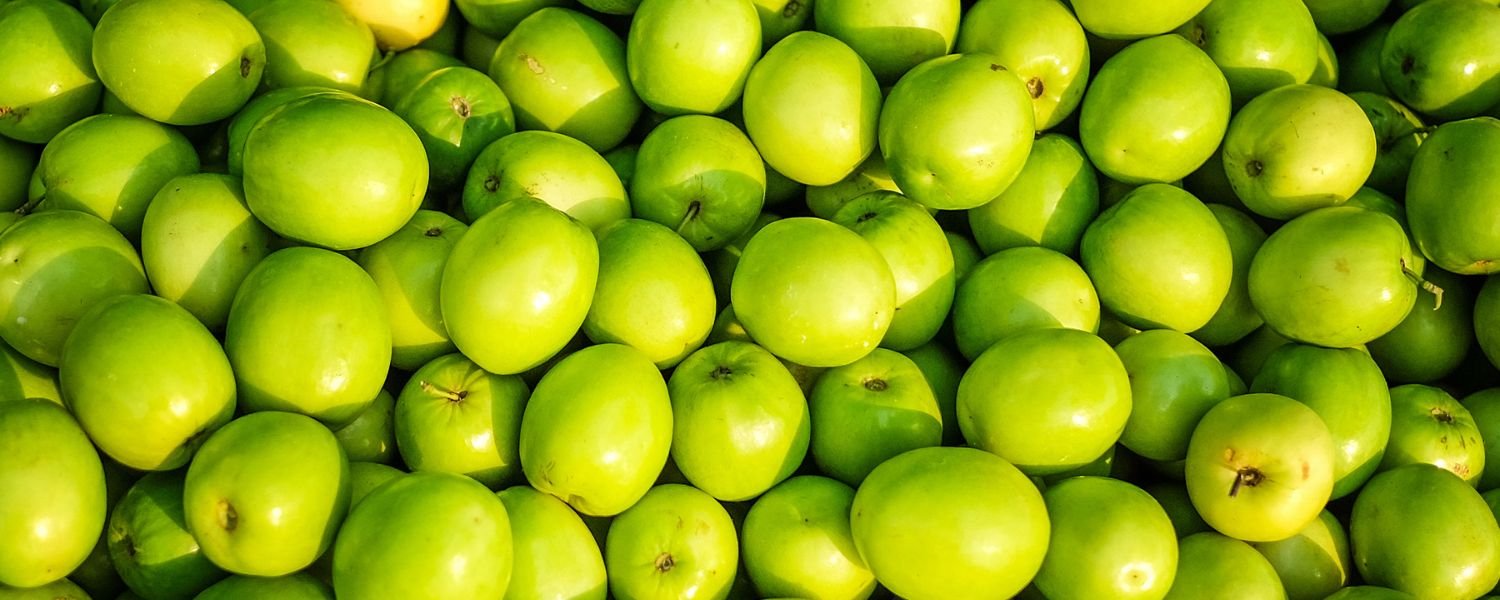
Indian Jujube fruit cultivation in rainfed areas follows specific techniques to ensure optimal growth and yield.
Seeds are typically sown in 300 gauge polythene tubes, measuring 25 cm in length and 10 cm in diameter.
These tubes are filled with a balanced mixture comprising farmyard manure, sand, and clay in equal proportions.
This ensures adequate nutrient availability and proper drainage for the developing seedlings.
In northern India, where the cultivation is prevalent, sowing is typically carried out in April.
This timing allows the seedlings to mature and become buddable by July, aligning with the optimal growth period for Indian Jujube fruit.
By following these cultivation techniques, farmers can foster healthy growth and maximize yields of this popular fruit variety, contributing to the region’s agricultural landscape.
2. Health Benefits of Indian Jujube
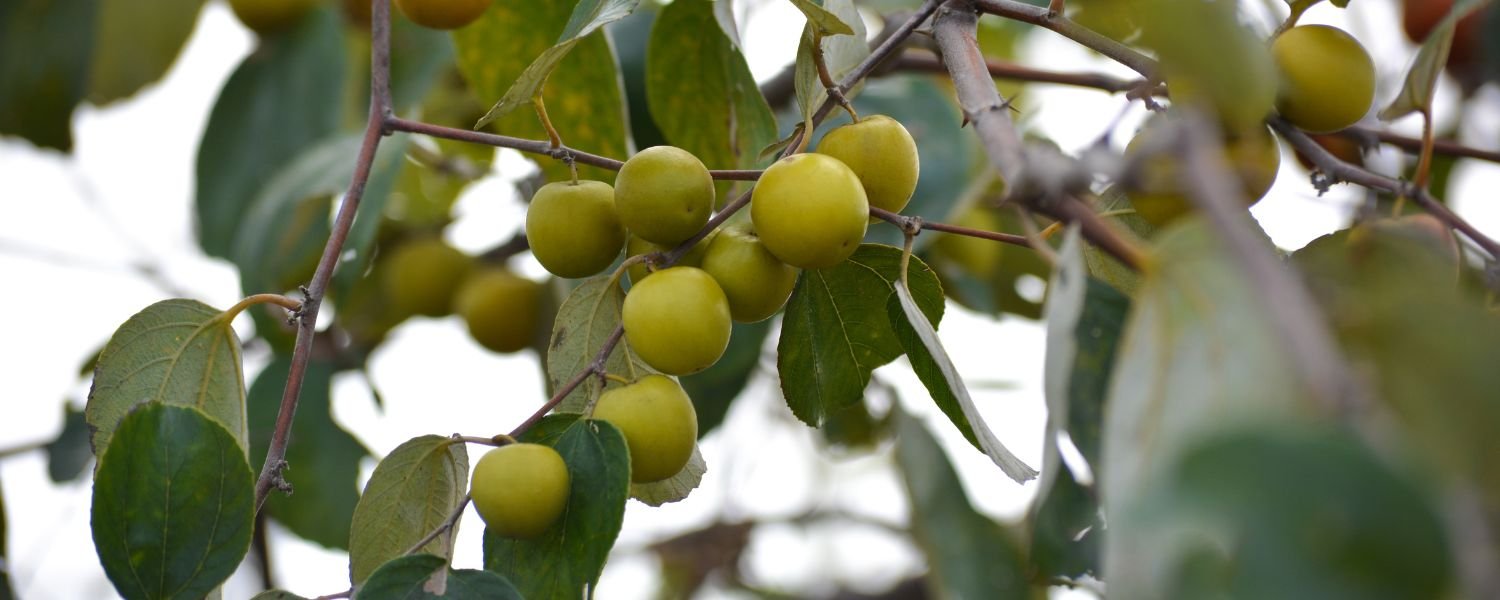
Discover the myriad health benefits of the Indian Jujube, a powerhouse of goodness packed into a small, red fruit.
Renowned for its versatility and healing properties, Indian Jujube is celebrated for its ability to promote overall well-being.
Rich in antioxidants and vitamins, this fruit aids skin rejuvenation, enhancing the skin’s natural glow and accelerating wound healing.
Moreover, it aids digestion, strengthens bones, and aids in weight loss efforts.
Indian Jujube also shows promising potential in protecting heart health, alleviating anxiety and insomnia, enhancing memory, and potentially combating cancer cells.
Its immune-boosting properties help the body fend off illnesses, while its ability to regulate blood sugar levels offers a boon to those managing diabetes.
Incorporating Indian Jujube into your diet can be a simple yet effective way to naturally enhance your health and vitality.
Embrace this ancient fruit to experience many health benefits and nourish your body from the inside out.
3. Traditional Uses of Indian Jujube

The Indian Jujube fruit, also known as ber or Ziziphus mauritiana, has a rich history in traditional Indian medicine for its diverse health benefits.
Renowned for its skin rejuvenating properties, it’s often incorporated into skincare routines to promote a healthy glow and combat signs of aging.
Additionally, its high content of vitamins and antioxidants supports wound healing and boosts immunity.
In culinary practices, Indian Jujube is celebrated for aiding digestion, strengthening bones, and aiding in weight loss due to its less calorie and high fiber content.
Beyond these common uses, ongoing research suggests its potential in protecting heart health, alleviating anxiety and insomnia, enhancing memory, and even combating cancer cells.
Moreover, it shows promise in controlling blood sugar levels, offering a natural remedy for diabetes patients.
With its myriad benefits, the Indian Jujube continues to be cherished for its delicious flavor and holistic health-promoting properties.
4. Indian Jujube Varieties

Indian jujube fruit, scientifically known as Ziziphus mauritiana, thrives in tropical climates across India.
Unlike its Chinese counterpart, Indian jujube is cultivated in warmer regions. India boasts a diverse array of over 90 cultivars, each exhibiting unique traits.
These cultivars vary in tree habit, leaf shape, fruit size, color, flavor, and shelf life.
The fruiting season also differs among cultivars, offering a prolonged harvest period.
Indian jujube trees showcase a range of growth habits, from sprawling to upright, catering to different agricultural needs.
Leaves come in various shapes, contributing to the aesthetic diversity of orchards.
Fruit characteristics such as size, color, and taste vary widely, providing options for consumers and farmers alike.
Additionally, the fruiting season spans different times of the year, ensuring a steady supply for markets and households throughout India.
With its rich diversity, Indian jujube fruit remains a beloved and versatile crop in the country’s agricultural landscape.
5. Harvesting Indian Jujube

Harvesting Indian jujube fruit is a rewarding endeavor that requires patience and attention to detail.
These delightful fruits typically begin bearing fruit within three to four years of planting, with production often being abundant.
A key indicator of ripeness is when the fruit’s hue transitions from a vibrant lime green to a warm rust color.
For optimal flavor and freshness, it’s advisable to harvest them in the early morning hours.
Once harvested, Indian jujubes can be enjoyed in various ways. They can be savored fresh, offering a crisp and subtly sweet taste akin to apples.
Alternatively, they can be incorporated into many recipes that traditionally call for apples, adding a unique twist to dishes such as pies, jams, or chutneys.
Whether eaten straight from the tree or used in culinary creations, the Indian jujube offers a delightful fusion of flavor and versatility to please any palate.
6. Indian Jujube in Ayurveda
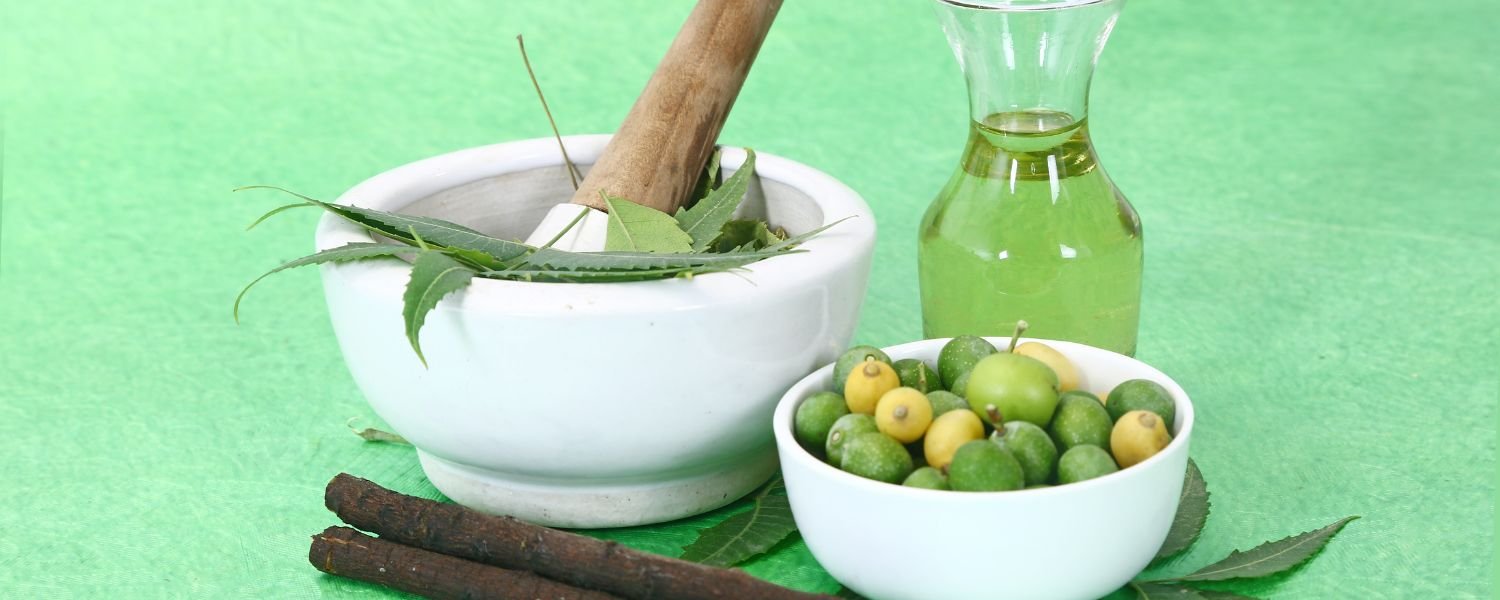
Indian jujube, also known as Ziziphus mauritiana, is a plant that holds significant importance in Ayurveda, the traditional medicine system of India.
The Indian jujube fruit, with its sweet taste and nutritional value, is a staple in Ayurvedic remedies.
This fruit has antioxidants, vitamins, and minerals, benefiting overall health.
In Ayurveda, Indian jujube is commonly used to treat various ailments such as asthma, anxiety, depression, fever, inflammation, and ulcers.
Its medicinal properties are attributed to its ability to balance the doshas, particularly Vata and Pitta, according to Ayurvedic principles.
The fruit is also believed to have a calming effect on the mind and body, making it helpful in managing stress and anxiety.
7. Economic Importance of Indian Jujube
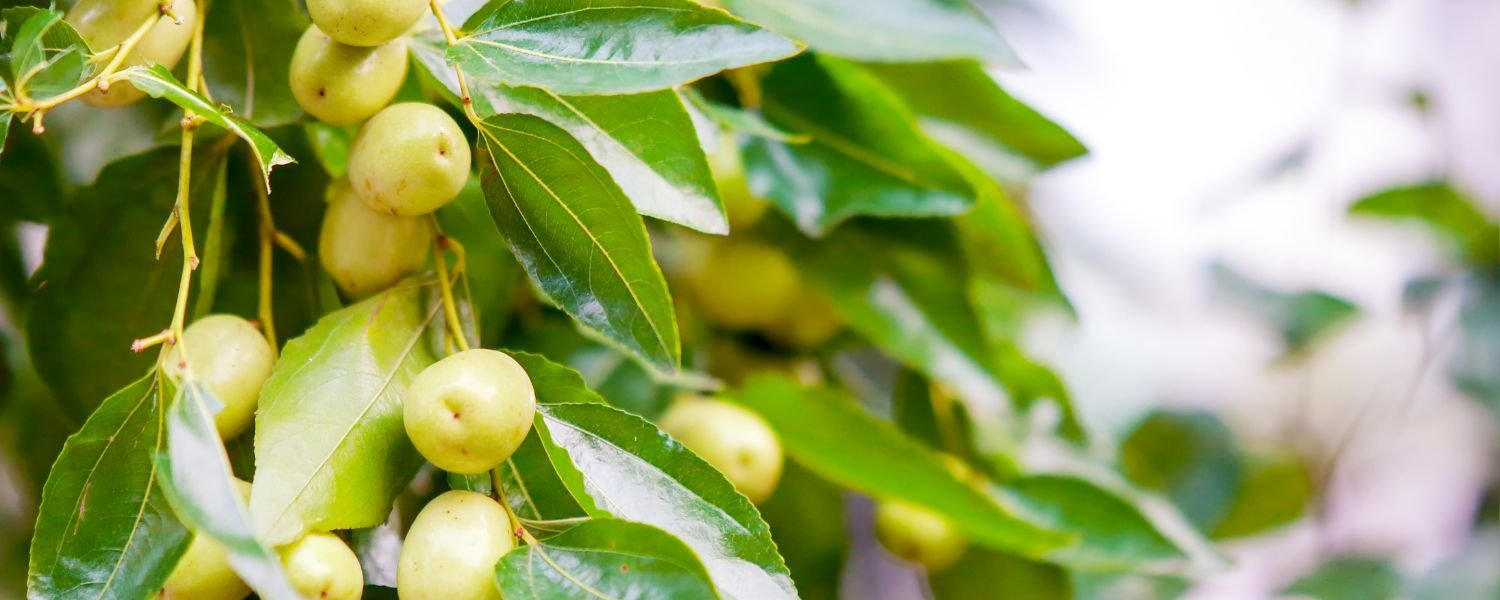
The Indian Jujube fruit, known for its rich flavor and nutritional benefits, holds significant economic importance.
Packed with carotene, vitamins A and C, and essential fatty oils, it serves as a valuable dietary supplement and contributes to the well-being of consumers.
Moreover, its versatile usage extends beyond mere consumption. In Indonesia, the young leaves are harvested and cooked as a nutritious vegetable, adding to its economic value.
The fruits and bark are also utilized in dye-making and medicinal preparations, further enhancing its commercial viability.
Furthermore, the Indian Jujube tree offers more than just its fruits.
Its wood, characterized by a reddish hue, delicate texture, and durability, presents opportunities in various industries.
From furniture-making to construction, the quality of Indian Jujube wood makes it a sought-after material, contributing significantly to the economy.
Overall, the economic importance of the Indian Jujube extends from its nutritional benefits to its diverse applications in various sectors, making it a valuable asset in the agricultural and industrial landscape.
8. Climate Requirements for Indian Jujube
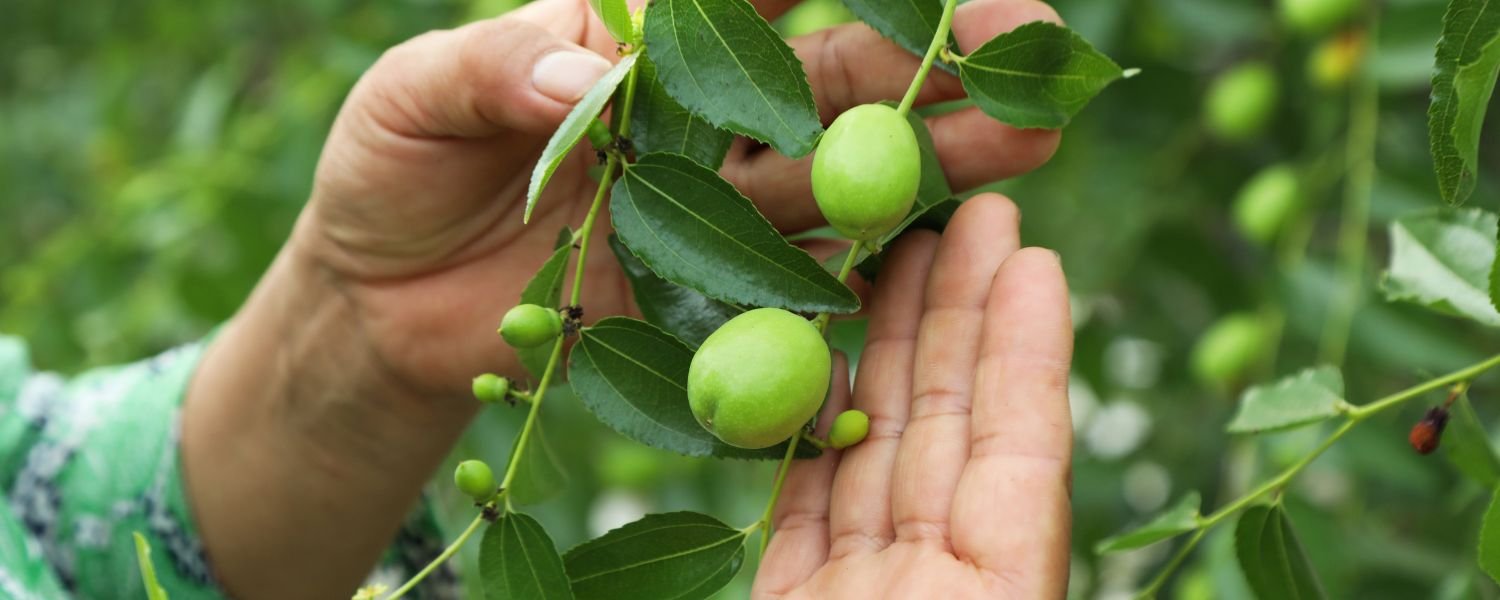
When cultivating the beloved Indian jujube, understanding its climate requirements is paramount for a fruitful harvest.
This resilient tree thrives in tropical and subtropical climates, favoring dry conditions, particularly during flowering and fruiting seasons.
Early rains are beneficial, enhancing soil moisture and facilitating robust growth.
While Indian jujube trees ideally flourish in well-drained, deep loam soil, they showcase adaptability and can thrive in various soil conditions.
Their ability to endure diverse environments makes them a versatile choice for growers across different regions.
By ensuring a balance of dryness during crucial stages and adequate soil moisture, cultivators can maximize the yield and quality of Indian jujube.
Embracing these climate considerations empowers farmers to nurture healthy trees, yielding bountiful harvests of this cherished fruit.
9. Indian Jujube Nutritional Value
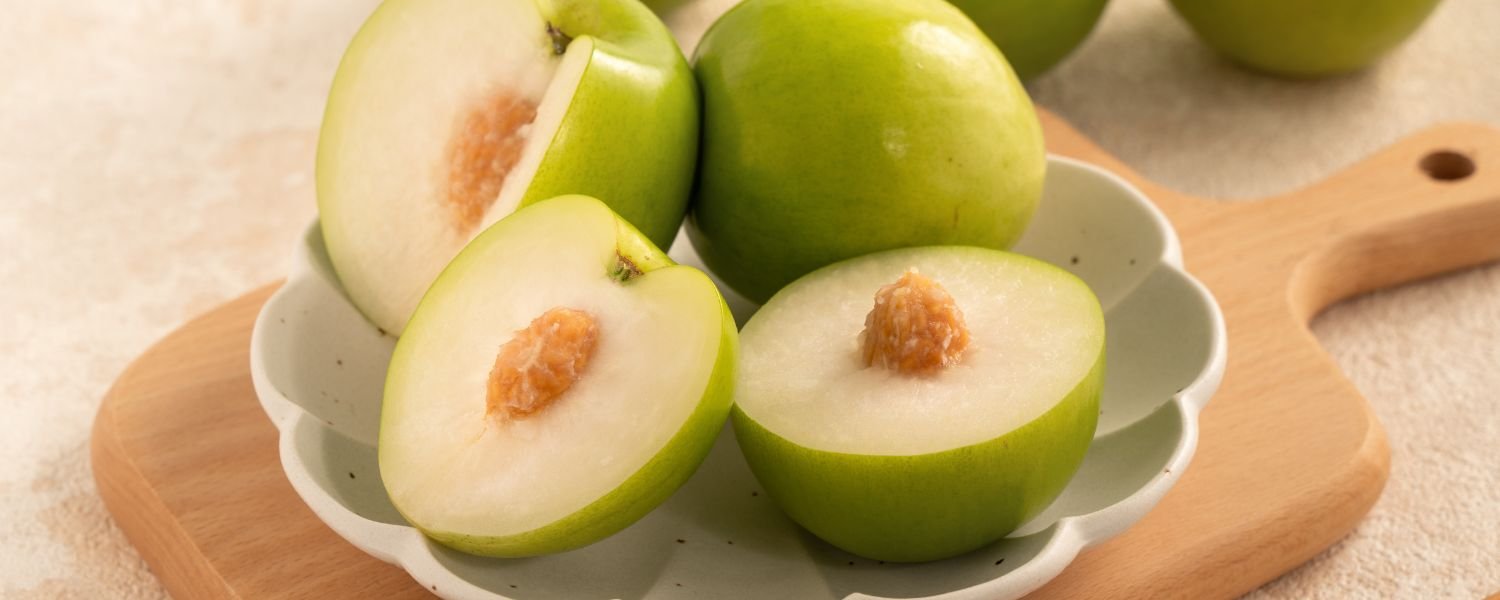
Nutritional powerhouse of the Indian Jujube fruit, a delightful treat packed with essential nutrients to boost your health.
With a mere 79 kcal of energy and 331 kJ per serving, this fruit offers a guilt-free indulgence.
Rich in protein, it provides 1.2 grams per serving, supporting muscle health and repair.
Moreover, its low-fat content, only 0.2 grams, makes it an excellent choice for those watching their fat intake.
But that’s not all; Indian Jujube contains other essential nutrients like vitamins and minerals.
It’s a good source of vitamin C, known for its immune-boosting properties, and vitamin A, promoting healthy vision and skin.
Minerals like potassium, magnesium, and iron are vital for various bodily functions.
Incorporating Indian Jujube into your diet satisfies your taste buds and nourishes your body with myriad health benefits.
10. Indian Jujube Soil and Water Requirements
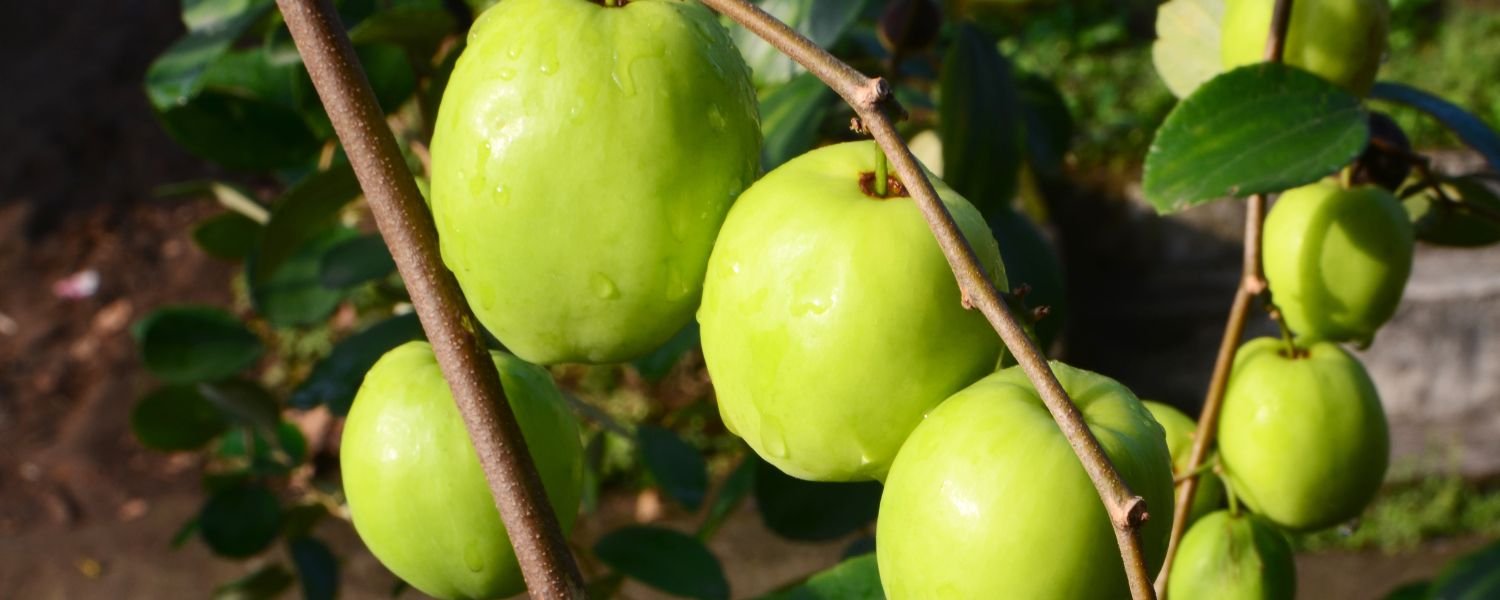
The Indian Jujube fruit thrives in various soils but prefers well-drained, sandy loams with a neutral to slightly acidic or alkaline pH.
It can also tolerate some salinity in the soil.
Propagation of Indian Jujube can be done through seeds or vegetatively via grafting or budding onto rootstocks.
It’s essential to ensure adequate watering for optimal growth, particularly during the first year.
If the soil of the mulch is dry, providing around 7 gallons of water per week is advisable, ideally in a single watering session.
This helps establish a robust root system and ensures healthy tree development.
By meeting its soil and water requirements, you can cultivate thriving Indian Jujube trees and enjoy a harvest of this delicious and nutritious fruit.
11. Indian Jujube: Growth Cycle
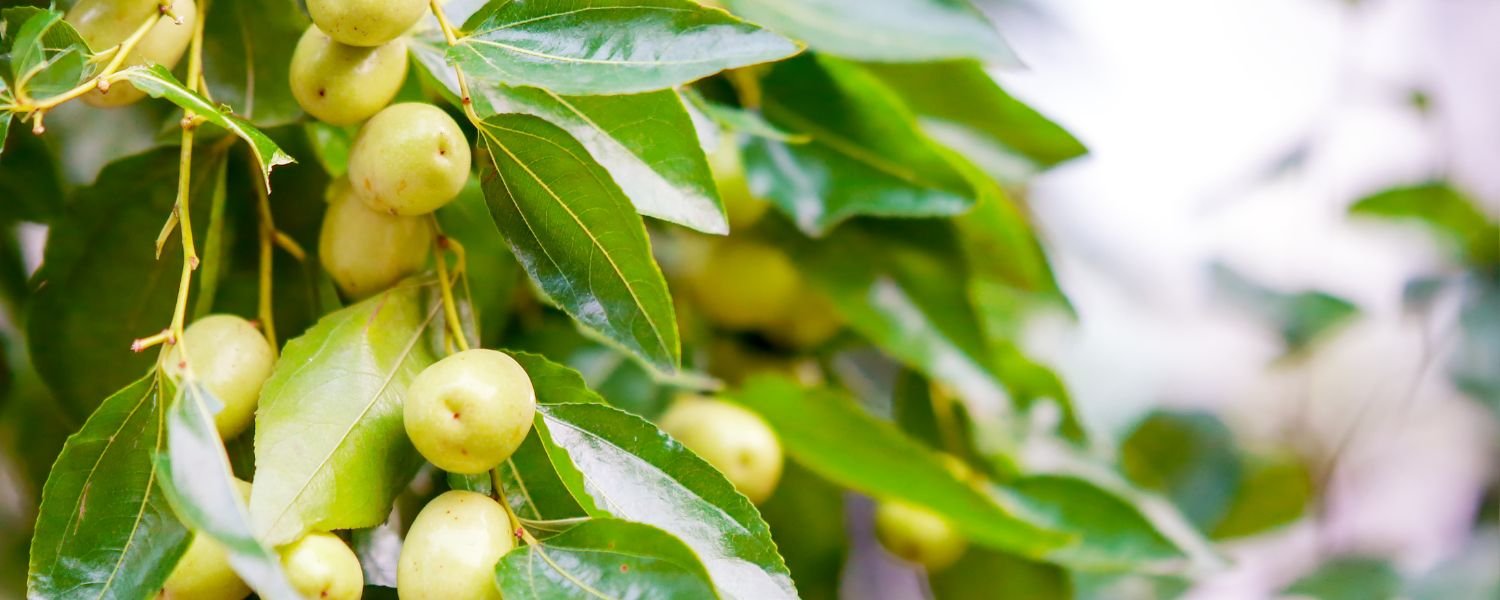
Indian Jujube, also known as Indian jujube, undergoes a fascinating growth cycle of distinct stages.
It begins with vegetative bud development, where tiny buds form on the branches.
As the plant progresses, it enters the phase of leaf development, where leaves start sprouting, contributing to the plant’s overall growth.
Following this, shoot development occurs, where new shoots emerge, enhancing the plant’s structure.
Then comes inflorescence development, marking the onset of flowering.
Delicate flowers begin to bloom, signifying the next stage: flower development.
These flowers transform into small, green fruits, initiating the fruit development phase.
Over time, these fruits grow, ripening into the delectable Indian jujube.
As the fruit matures, the plant begins its senescence or dormancy phase, preparing for the next cycle.
In essence, the growth cycle of the Indian jujube encompasses a series of crucial stages, each contributing to the eventual harvest of this beloved fruit.
12. Global Distribution of Indian Jujube
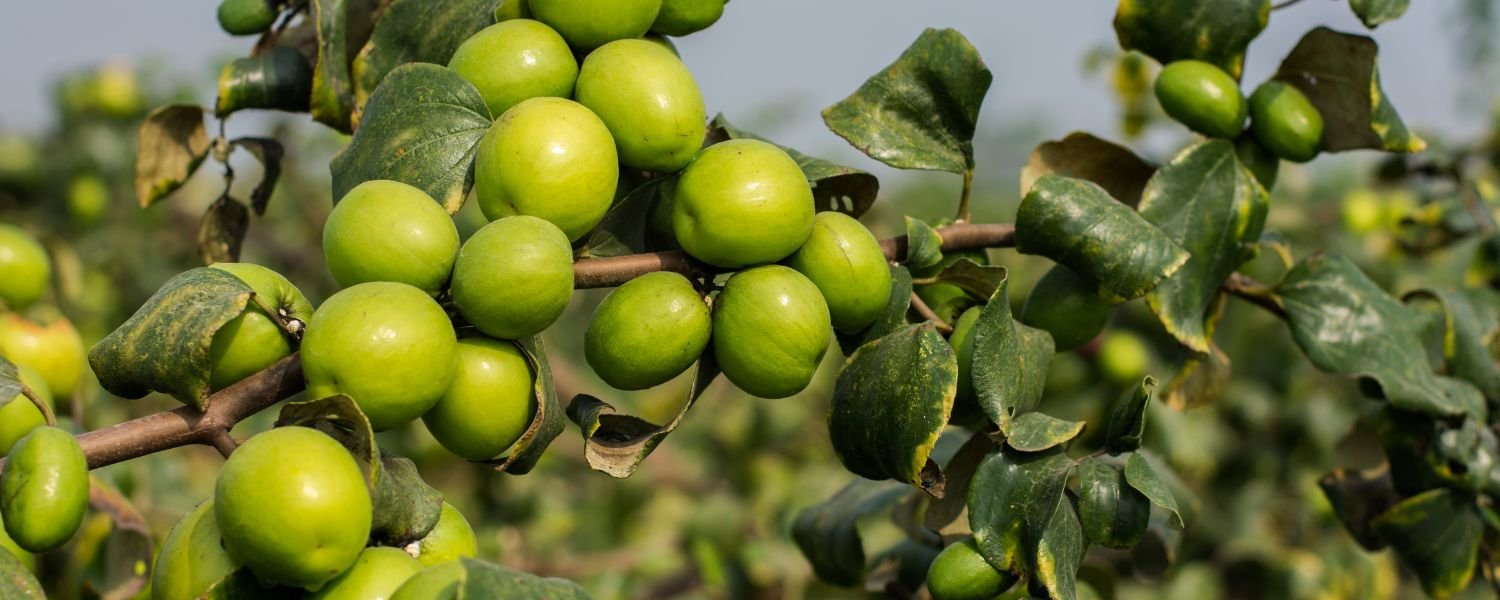
The Indian jujube, also known as “ber” or “bor,” boasts a rich history and a broad global distribution.
Native to South Asia, particularly India, this fruit has gained worldwide due to its different flavor and various health benefits.
Indian jujube trees thrive in warm climates and are cultivated in regions from Africa to Southeast Asia and even parts of Australia and the Americas.
In Africa, countries like Egypt, Sudan, and Ethiopia are notable producers of Indian jujube.
Southeast Asian nations like Thailand, Vietnam, and the Philippines also cultivate this fruit extensively.
Additionally, regions with Indian diaspora, such as the Caribbean and Fiji, have introduced Indian jujube cultivation, adding to its global distribution.
The fruit’s adaptability to diverse climates and soil conditions has contributed to its widespread presence across continents.
Whether fresh or dried, Indian jujube remains a beloved fruit, valued for its sweet taste and nutritional properties.
Its global distribution underscores its significance as a cultural and culinary staple in various parts of the world.
Conclusion
In conclusion, the Indian jujube fruit, scientifically known as Ziziphus mauritiana, stands as a testament to nature’s bounty and cultural significance.
The Indian side has a rich history that goes back to its origins; this tropical gem has transcended borders, earning monikers like Indian plum, Chinese date, and ber, among others.
Its versatility in culinary and medicinal realms underscores its importance in traditional practices and modern-day cuisines.
Beyond its delectable taste and aroma, the Indian jujube boasts many health benefits.
Antioxidants, vitamins, and minerals offer a nutritional punch, supporting immune function and overall well-being.
Its presence in traditional medicine systems further underscores its therapeutic potential, aiding digestion, promoting skin health, and even alleviating stress.
Moreover, the Indian jujube symbolizes resilience, thriving in diverse climates and landscapes.
Its adaptability has made it a staple in arid regions, providing sustenance and livelihoods to communities for generations.
Furthermore, its cultivation offers ecological benefits, contributing to soil conservation and biodiversity preservation.
For more Food-related blogs, Subscribe to us Now!
FAQ
Q. What is Indian Jujube Fruit?
An. Indian Jujube fruit, scientifically known as Ziziphus mauritiana, is a tropical fruit species belonging to the family Rhamnaceae.
It goes by several names, such as Indian plum, Chinese date, Chinese apple, ber, and dunks.
The fruit is small, round, and typically green when unripe, turning into a reddish-brown hue upon maturity.
Q. Where is Indian Jujube Fruit commonly found?
An. Indian Jujube fruit is native to South Asia and is particularly prevalent in India, where it thrives in tropical and subtropical regions.
It is also cultivated in countries with similar climatic conditions, including China, Thailand, and parts of Africa.
Q. What are the nutritional benefits of Indian Jujube Fruit?
An. Indian Jujube is a source of vitamins, particularly vitamin C, which boosts immunity and promotes skin health.
The text below has been reworded as promised. Iron, potassium, and calcium are crucial minerals present in it.
They help maintain bone health and regulate blood pressure, among other bodily functions.
Q. How is Indian Jujube Fruit consumed?
An. Indian Jujube fruit can be eaten fresh or dried.
It is often enjoyed raw as a snack or incorporated into desserts, jams, and sauces.
Dried jujubes are commonly used in traditional medicine and herbal teas for their health benefits.
Q. Are there any health benefits with Indian Jujube Fruit?
An. Indian Jujube is believed to possess medicinal properties, including improving digestion, relieving stress and anxiety, and promoting better sleep.
Additionally, its antioxidant-rich content may help combat radicals and lower the risk of chronic diseases.
Q. Is Indian Jujube Fruit readily available?
An. Indian Jujube is widely available in markets throughout its native regions and is increasingly gaining popularity in international markets due to its unique flavor and nutritional value.
